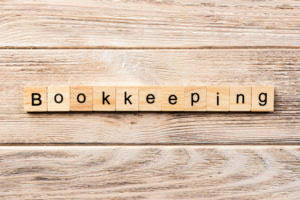Accounting Entries for Depreciation Expenses With Example

The amount of depreciation is recorded in the asset’s ledger account to show the decrease in the asset’s value over time. If you’re lucky enough to use an accounting software application that includes a fixed assets module, you can record any depreciation journal entries directly in the software. In many cases, even using software, you’ll still have to enter a journal entry manually into your application in order to record depreciation expense. Companies take depreciation regularly so they can move their assets’ costs from their balance sheets to their income statements.
Instead, depreciation is merely intended to gradually charge the cost of a fixed asset to expense over its useful life. It reports an equal depreciation expense each year throughout the entire useful life of the asset until the asset is depreciated down to its salvage value. Salvage value is based on what a company expects to receive in exchange for the asset at the end of its useful life.
Finish Your Free Account Setup
For example, on June 01, 2020, the company ABC Ltd. buys and makes a proper record of a $1,770 computer for office use and it is put to use immediately after the purchase. The computer’s estimated useful life is 3 years with a salvage value of $150. Paying employees is often one of the most significant expenses for small business owners. With Hourly payroll software, you can automatically run payroll and calculate related costs, like taxes and workers’ comp—all in one click. Note that while salvage value is not used in declining balance calculations, once an asset has been depreciated down to its salvage value, it cannot be further depreciated. Accumulated depreciation is a contra-asset account, meaning its natural balance is a credit that reduces its overall asset value.
- By crediting accounts payable, which is a liability account, this entry shows that you owe your vendor $1,000.
- In this case, the total value of your payroll gets recorded in the payroll expense account.
- Calculating the periodic allocation of a fixed asset’s cost over its useful life is essential for accurate bookkeeping and accounting.
- The periodic allocation of a fixed asset’s cost over its useful life is recorded as an expense in the company’s books.
- In accounting, depreciation is the process of allocating the cost of an item over its anticipated useful life.
- Because this is not logical, when you buy a new asset, you less the value from the company income statement.
This, in turn, helps businesses to make informed decisions about investments, expansions, and other financial activities. Assets that are commonly subject to depreciation include buildings, machinery, equipment, vehicles, and furniture. This debit shows that your expense account has increased—or the transaction has increased your total costs. The double-declining balance (DDB) method is an even more accelerated depreciation method.
Double declining balance method
Fixed assets are the physical assets of the business that have a life of more than one year and are used in the production of income. Accumulated depreciation is the total amount of depreciation that has been charged against the asset since its purchase. The ABC company will continue to charge the annual depreciation charge until year 10. After that, the company will adjust the accumulated depreciation with the salvage value and the remaining cost of the asset. There are two main accounts created to record the journal entry for the depreciation charge. There is one disadvantage of this method, which is that it is not possible to find out the original cost of an asset and the total amount of depreciation.

The income statement records the depreciation expense as an operating expense, reducing the net income of the business. The depreciation expense is recorded in the income statement in the period in which it is incurred, reflecting the decrease in the asset’s value during that period. The SYD method of depreciation is useful because it may provide depreciation expense journal entry a more accurate representation of the true decrease in the value of the asset over time. However, it can be more complicated to calculate than the straight-line method and may not be appropriate for all types of assets. For example, it assumes that the asset depreciates at a constant rate over its useful life, which may not always be the case.
Types of Depreciation With Calculation Examples
Synder provides a comprehensive solution for recording the transactions in bulk – daily summaries. Therefore, at the end of each year, its balance is closed and the account Depreciation Expense will begin the next year with a zero balance. Physical depreciation results from wear and tear due to frequent use and/or exposure to elements like rain, sun and wind.
There are various methods used to calculate depreciation, but they generally fall into two categories. In the Spivey example, we assumed that the assets were purchased on the 1st day of the month, but of course, that is not usually the case. As we can see there are two important determinants in the depreciation accounting for an asset. A depreciable asset can lose value due to usage, a fall in its price, or obsolescence of technology. Depreciation is the method to account for that decrease in the value of an asset over time. Asset revaluation, where assets are regularly assessed and updated to their market value, can provide an alternative approach for tracking the value of assets without traditional depreciation.
